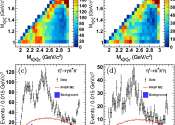Possible evidence of glueballs found during Beijing Spectrometer III experiments
A large international team of physicists working on the BES III collaboration has announced possible physical evidence of glueballs. In their study, published in the journal Physical Review Letters, the group analyzed decaying ...









